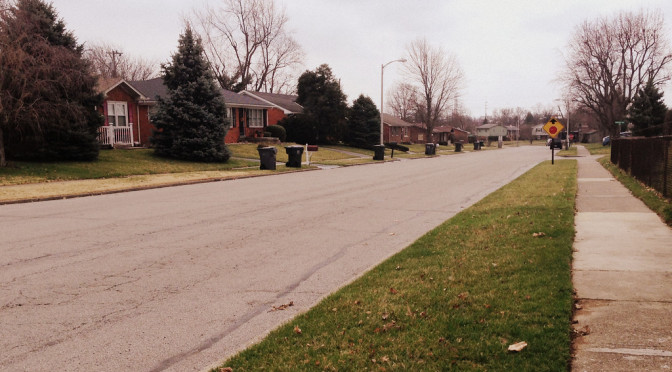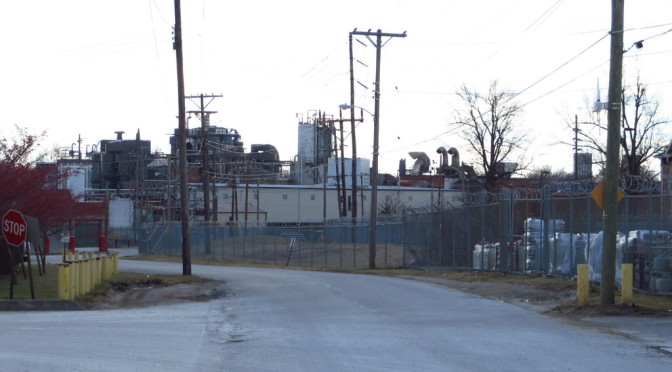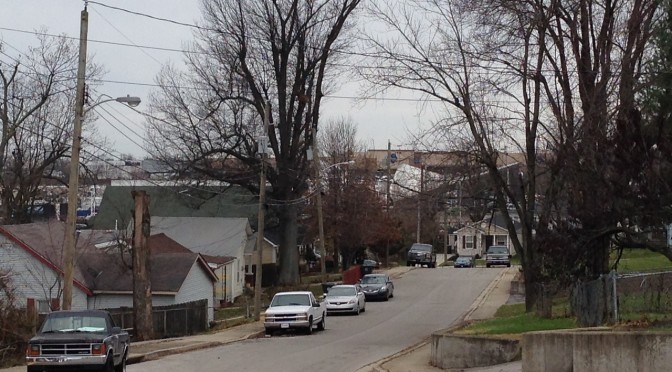[load]
I keep heading into the Joyland neighborhood with high expectations. After all, this is a neighborhood that sits on the site of an old amusement park. It should be fun. This portion of the neighborhood feels much like similar neighborhoods from the 1950’s and 1960’s. There were two things that stuck out to me today. The first is that these streets feel wide, even by the standards of the era. They aren’t really wider than streets in, say, Rookwood. But with low houses, flat lawns and few trees in the tree lawn, it feels wide open. I really want to draw up sectional views of different streets to show what a dramatic impact house height, setbacks and trees can have. The second thing is that neighborhoods from this era feel stuck in time, more so than much older neighborhoods or slightly newer neighborhoods. I’m not sure why this is–demographics may be a factor–though it seems to be fairly consistent.Tag Archives: 40505
Day 86-Return to Rookwood
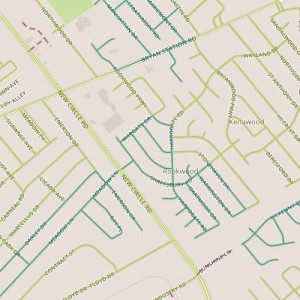 Day 86 brought me back to Rookwood, which I’ve visited twice before, on Day 45 and Day 7. Today’s walk was similar in a lot of ways to the one on Day 45, including the converted garages. Today’s walk did pass near an original house in the neighborhood, apparently much older than the 1950’s-vintage houses around it–its always neat to come across these houses.
Day 86 brought me back to Rookwood, which I’ve visited twice before, on Day 45 and Day 7. Today’s walk was similar in a lot of ways to the one on Day 45, including the converted garages. Today’s walk did pass near an original house in the neighborhood, apparently much older than the 1950’s-vintage houses around it–its always neat to come across these houses.
A couple of things struck me today. The first was that the streets here are over-engineered, with posted speed limits of 35mph that are probably faster than they need to be for starters, but which may well be exceeded regularly because the street “feels” faster than 35mph–there aren’t a lot of psychological barriers to going faster. The streets feel wide, and they are wide at 36 feet. Few parked cars and few streets in the treelawn area contribute to the wide-open feeling here. The speed at which cars are traveling and lack of barriers doesn’t just make these streets feel (incrementally) less safe to walk along, it also makes parking on the street feel kind of risky.
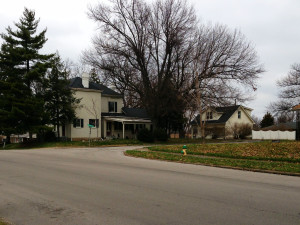
The second thing I noticed is that there were relatively few signs of young kids in this neighborhood. There may be good reasons for this and of course subjective observations are susceptible to all sorts of errors, but it seems worth mentioning, especially in light of the traffic speed observations.
Day 83-Zesta!
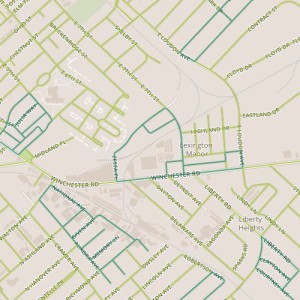 I know you’ve always wanted to know what, exactly, is down Zesta Place. Today’s walk was an exploration of the industrial area surrounding the Jif peanut butter plant on Winchester Road including the intriguingly-named Zesta. (Did someone intentionally name a street that runs by a peanut butter plant after a cracker?)
I know you’ve always wanted to know what, exactly, is down Zesta Place. Today’s walk was an exploration of the industrial area surrounding the Jif peanut butter plant on Winchester Road including the intriguingly-named Zesta. (Did someone intentionally name a street that runs by a peanut butter plant after a cracker?)
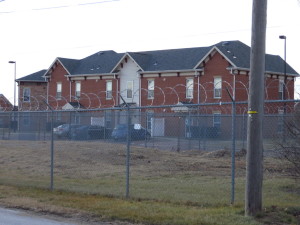
But what lies down Zesta is about what you’d expect in an industrial area. You’d probably feel more comfortable on this street in a forklift or a semi. In addition to the peanut butter plant there are a number of smaller operations and a sprawling industrial gas distributor.
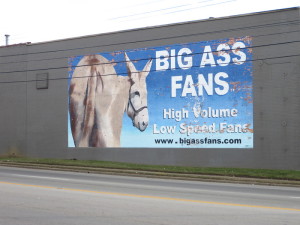
Both Zesta and Magnolia feel more like a part of the adjacent industrial operations than public, city-maintained streets (which they are), and a significant stretch of Montgomery was lined with razor wire fence on one side and barbed wire on the other. I was actually a little surprised that I received as little attention as I did. By the time I reached Zesta, I’d actually convinced myself that these were private streets.
Day 80-Bucolic
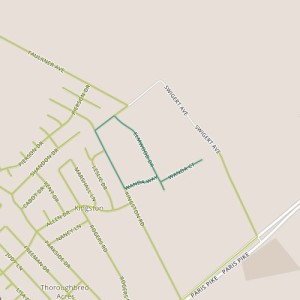 Today’s walk was near the northeastern edge of the urban service area. The edge of the urban service area is very pronounced on the south side of Lexington where it corresponds with the Fayette/Jessamine county line. On one side, there are densely packed suburban houses. On the other, there is farmland. The line is less defined on the north side, where the city blends gradually into country. Today’s walk was in one of these edge neighborhoods, near the Joyland neighborhood but distinct from it. The area includes several small subdivisions, including the Mar-Lou subdivision along Wanda with 60s-vintage brick ranch houses, the Elmwood Heights subdivision along Elmwood with smaller, older frame houses, and some unaffiliated houses on deep lots, some nearly a full acre, along the north side of Kingston.
Today’s walk was near the northeastern edge of the urban service area. The edge of the urban service area is very pronounced on the south side of Lexington where it corresponds with the Fayette/Jessamine county line. On one side, there are densely packed suburban houses. On the other, there is farmland. The line is less defined on the north side, where the city blends gradually into country. Today’s walk was in one of these edge neighborhoods, near the Joyland neighborhood but distinct from it. The area includes several small subdivisions, including the Mar-Lou subdivision along Wanda with 60s-vintage brick ranch houses, the Elmwood Heights subdivision along Elmwood with smaller, older frame houses, and some unaffiliated houses on deep lots, some nearly a full acre, along the north side of Kingston.
Although each of these stretches are distinct, they all give the sense of being rural rather than urban. Horses graze on the properties behind houses on Wanda. Elmwood feels the most suburban, but derives a small-town feel nonetheless, possibly from variety in form (presence of sidewalks or fences, or to a lesser extent, style of housing). In any case, Elmwood feels nothing like the newer suburbs on the south side. The setbacks on Kingston are deep–well beyond that of a typical suburb. The takeaway here may be the different ways in which a particular neighborhood feel is accomplished: reference to surroundings, for example the contrast of suburban houses with agricultural land or even contrast between neighbors, is powerful here.
Day 69-Hemmed in
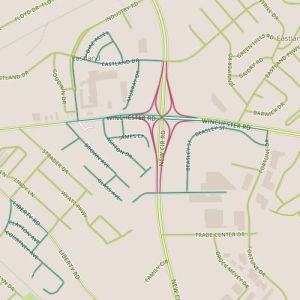 Today’s walk required a short walk across New Circle Road on Winchester and the area immediately southwest of the interchange, which is one of the busiest interchanges in Lexington. The areas adjacent to the interchange are commercial and include a couple of self-storage facilities on James and a newer office building. Ashton and Forston make up a hidden residential neighborhood, very similar to the neighboring area I passed through on Day 23. The homes here are modest, generally 1940’s vintage though with some newer houses mixed in and some addition room for further infill. This is another neighborhood that isn’t self-conscious, and though this can sometimes result in some rough edges, this area exuded a sense of pride. There is probably a long list of housing qualities, objective and subjective, that you could measure–size and age to name a few. This area outperforms expectations for upkeep based on size, age, construction.
Today’s walk required a short walk across New Circle Road on Winchester and the area immediately southwest of the interchange, which is one of the busiest interchanges in Lexington. The areas adjacent to the interchange are commercial and include a couple of self-storage facilities on James and a newer office building. Ashton and Forston make up a hidden residential neighborhood, very similar to the neighboring area I passed through on Day 23. The homes here are modest, generally 1940’s vintage though with some newer houses mixed in and some addition room for further infill. This is another neighborhood that isn’t self-conscious, and though this can sometimes result in some rough edges, this area exuded a sense of pride. There is probably a long list of housing qualities, objective and subjective, that you could measure–size and age to name a few. This area outperforms expectations for upkeep based on size, age, construction.
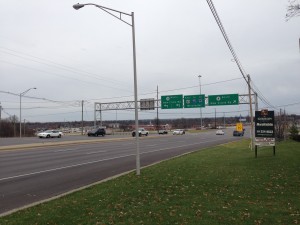
Winchester and New Circle Road really isolate this area perceptually; from a car, it’s easy to pass without thinking of the side streets; on foot, crossing either Winchester or New Circle is an adventure. With the retail businesses on the north side of Winchester, it would be nice to see this stretch get some pedestrian improvements.

